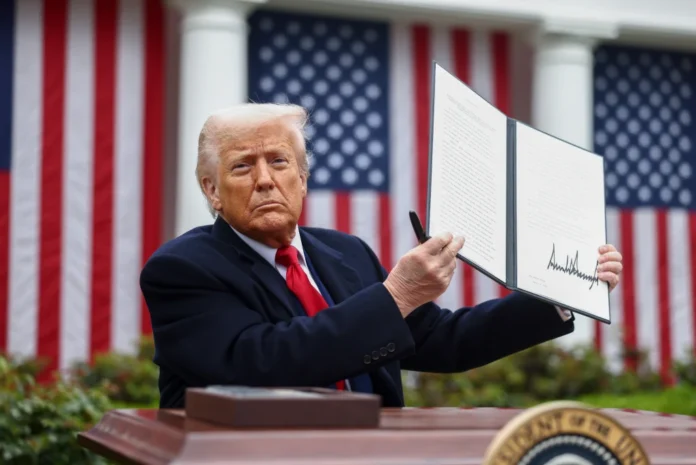In the financial world, there’s a known truth: the markets can handle bad news better than they can handle uncertainty. When you know what you’re up against, you can plan around it. But when the rules keep changing? That’s when confidence dries up, and decision-making stalls. Right now, that’s exactly what’s happening in the U.S. banking sector.
The abrupt and ever-evolving nature of the current U.S. tariff policy—largely driven by a whirlwind of executive orders and public statements—has cast a long shadow over dealmaking. Banks, normally key players in facilitating mergers, acquisitions, and capital investments, now find themselves and their clients pressing pause. The result? A financial environment clouded by hesitation, doubt, and strategic gridlock.
A Climate of Uncertainty
Over the past several weeks, U.S. trade policy has shifted at an unusually rapid pace. New tariffs have been announced with little warning, only to be scaled back or suspended days later. From a purely economic standpoint, these tariffs represent additional costs for businesses. But it’s not just the direct financial impact that’s causing concern—it’s the unpredictability of it all.
When trade policies flip from hardline to lenient overnight, companies are left guessing. And in a world where major investments often hinge on long-term forecasts and cross-border supply chains, that kind of instability is a dealbreaker—literally.
Banks, which often act as advisors and financiers for large corporate transactions, are seeing that firsthand. Whether it’s a planned acquisition of a foreign company or a domestic expansion reliant on imported materials, deals are now being delayed or outright abandoned because executives simply don’t know what tomorrow’s trade landscape will look like.
Deal Pipelines on Hold
In normal times, banks would be deep into the spring dealmaking season—structuring loans, underwriting deals, advising corporate clients on everything from growth strategies to market entry. But with tariff policies shifting under their feet, many clients are holding back.
Bankers report a noticeable slowdown in client activity, with some pipelines grinding to a halt. M&A deals that were weeks away from closing are now being re-evaluated. Private equity firms, wary of hidden costs and unforeseen policy risks, are rethinking term sheets. Even companies with healthy balance sheets are keeping their capital close to the chest.
For banks, that means a critical revenue stream—advisory fees, underwriting income, and lending opportunities—is narrowing.
Ripple Effects Across the Economy
The slowdown in banking activity doesn’t exist in a vacuum. When dealmaking dries up, it affects job creation, investment in infrastructure, innovation, and economic momentum more broadly.
A manufacturer thinking about building a new plant may hesitate if steel tariffs suddenly change the cost dynamics. A tech company considering acquiring a smaller competitor might back off if tariffs threaten their global supply chain. And when businesses pull back, banks follow.
This domino effect is what worries economists and industry leaders alike. The longer the uncertainty drags on, the more likely it is to sap broader economic confidence—potentially tipping sectors, or even the economy as a whole, toward a downturn.
Waiting for Clarity
What banks and businesses are looking for now isn’t necessarily favorable policy—it’s stable policy. Whether the tariffs stay or go, or whether a clear long-term strategy emerges, consistency is key. It’s the constant pivoting and lack of visibility that’s paralyzing the markets.
Financial institutions are built to assess and price risk. They’ve weathered recessions, regulatory overhauls, and market crashes. But when policy becomes unpredictable to the point where future scenarios can’t be reasonably modeled, even the most seasoned advisors are forced to take a step back.
That’s the moment we’re in now.
Strategic Patience, Tactical Retrenchment
In response to the uncertainty, many banks are encouraging clients to take a “wait and see” approach. Short-term strategies are being prioritized over long-term commitments. Liquidity is being preserved. International exposure is being reassessed.
Some banks are even revisiting internal forecasts and adjusting earnings expectations to reflect the slower pace of client engagement. For a sector that thrives on momentum, this pause is more than a blip—it’s a potential turning point.
That said, not all is bleak. Historically, markets tend to rebound once uncertainty clears. When policies stabilize and expectations reset, there’s often a burst of pent-up activity. Deals that were shelved return to the table. Strategic moves resume. But timing is everything, and for now, caution reigns.
Conclusion: A Fragile Balance
The current environment is a stark reminder that confidence—not just capital—drives financial markets. Banks are ready to help businesses grow, invest, and innovate. But they can’t do that when the rules of the game keep changing mid-play.
Until there’s more clarity on trade policy and its long-term implications, the financial sector may remain in this holding pattern. And while the fundamentals of the economy may still be strong, uncertainty—especially the kind that comes without warning—is proving to be one of the most powerful brakes on economic activity.
In the end, it’s not just the cost of tariffs that matters. It’s the cost of not knowing what comes next.




